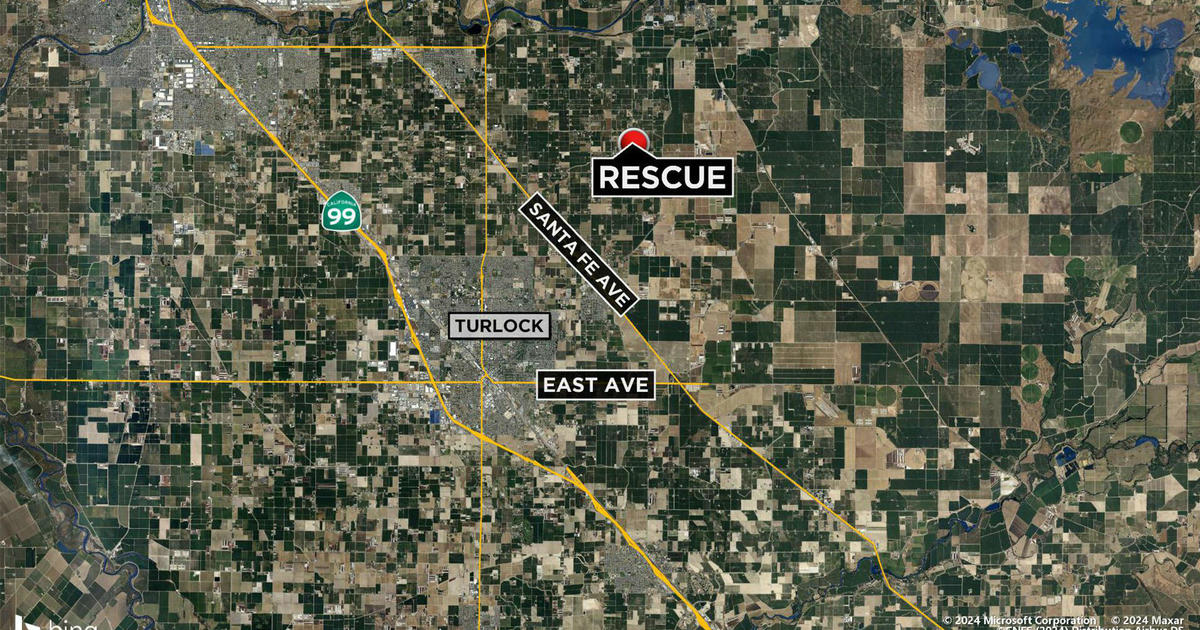Call Kurtis Investigates: What's In Your Milk?
Some of the dairy milk we drink could contain farm medicine used to treat sick dairy cows, if reports from dairy cow meat tests are an indication, CBS13 has learned.
A three-month Call Kurtis investigation has learned 17 different types of antibiotics have been found in the meat of dairy cows, though dairy milk is only screened for six antibiotics. The findings show some farm medicines could be flying under the radar and onto the dinner table, since most of that milk is not tested for those additional antibiotics.
The findings are a bit startling for the Boehrer family, which, with four girls, goes through milk by the gallons each week.
"If the girls want a glass of milk, I never tell them no," said Michael Boehrer, the girls' father.
But he does not know everything that's in each glass, he said.
"It concerns me a little bit, I'll be honest with you," he said.
Concerns about resistance
Advocacy groups suspect the same medicines given to sick cows may be ending up in our milk, allowing bacteria to develop resistances.
"We no longer have antibiotics for the diseases they were created for," said Robert Cohen of the Dairy Education Board.
Unintended exposure to antibiotics could keep the same drugs from working when prescribed to people — something infectious disease doctors have long worried.
"There are concerns we're running out of antibiotics as more and more bacteria become resistant," said Dr. Richard DeFelice, who specializes in infectious diseases at Methodist Hospital of Sacramento.
But the level of risk depends on the quantity of antibiotics consumed, DeFelice said.
And when it comes to milk, no one knows for sure the quantity of antibiotics present, CBS13 has learned.
What's in the milk?
Most milk is only tested for the six beta lactam antibiotics of the Penicillin family, the California Department of Food and Agriculture told CBS13.
Read the CDFA's statement (.PDF; 100 KB)
"The reason we focus on the Penicillin family is those reactions are always the result of somebody being allergic to it," said Michael Marsh, CEO of the Western United Dairymen, an organization making up more than 60 percent of the 1,800 California dairies.
Allergies are the most common immediate result of unintended exposure to common antibiotics, Defelice said, but others can do long-term damage, making it difficult for the human body to fight off diseases.
Though policy is set by the U.S. Food and Drug Administration, the testing is done by CDFA-licensed employees of creameries — the packaging plants where milk is shipped from the farm.
Read the CDFA's explanation of licensing and on-site testing (.PDF; 100 KB)
The milk testing is done by the tanker truck, with employees recording the results.
Major creameries CBS13 contacted said they occasionally test for extra compounds in the milk, but generally only at the request of a supermarket or restaurant who wants to buy the milk.
No creameries or grocery stores CBS13 contacted would release details about which antibiotics, if any, they test in addition to the state-required milk screen.
Digging through data
Under a California Public Records Act request, CBS13 obtained more than 700 pages of documents from CDFA detailing milk residue violations from the last three years.
Browse CDFA's milk inspection reports from 2009-2011 (.PDF; 69.9 MB)
Among other data, CBS13 learned of 715,405 tanker loads screened in 2010, only 98 of them were dumped after testing positive.
It is proof milk is handled carefully, Marsh said of these numbers.
Others told CBS13 farm medicine could still be getting into the milk undetected.
What's in the meat?
When dairy cows are slaughtered, USDA inspectors test for dozens of compounds, instead of just the six required for milk.
Documents CBS13 requested under the Freedom of Information Act show 17 different types of antibiotics, as well as other compounds, have shown up in California dairy cow meat since 2007.
The findings showed levels of Ampicillin, Amoxicillin, Chloramphenicol, Desfuroylceftiofur Cysteine Disulfide, Dihydrostreptomycin, Florfenicol, Fluoroquinolones, Gentamicin Sulfate, Lincomycin, Neomycin, Oxytetracycline, Penicillin, Pirlimycin, Spectinomycin, Tetracycline, Tilmicosin and other compounds.
Meat with illegal levels is flagged and destroyed — and the farmers are sent violation letters — but could these antibiotics still be ending up in FDA-approved dairy milk?
USDA FSIS Laboratory Analytical Methods (.PDF; 3.8 MB)
The Food Safety Inspection Service releases a weekly report on its website of dairies "with more than one residue violation in the last 12 months either in the same establishment or different establishments."
"There's a possibility it could be in the milk," said Terry Lehenbauer, Director of the UC Davis School of Veterinary Medicine Teaching and Research Center in Tulare.
Medication is used to nurse sick dairy cows back to health, but cows are rarely medicated if they won't be used in milk production again. Once farmers determine the cow's production cycle is over, they don't generally medicate them, Lehenbauer said.
But CBS13 found, according to USDA FSIS reports, some medicine is still finding a way into the dairy cow meat anyway.
That could indicate cows are being milked with more antibiotics in their bodies, he said.
Lehenbauer clarified, however, there is no current scientific evidence suggesting the milk is dangerous.
"Most every dairy farmer is very concerned about the quality of the milk," Lehenbauer said.
On the farm
Fifth-generation dairy farmer Jim Pellandini of Galt's B&J Dairy said nursing sick cows is part of the business, and farmers know how to keep these farm medicines out of the milk supply.
Separating cows being treated with drugs is industry standard in dairy farming, with farmers like Pellandini waiting until the medicine has cleared their systems to milk again.
"We do so much testing it's unbelievable," he said, referring to the $15-$20 milk tests his farm buys in bulk to ensure milk shipments don't contain any of the six CDFA-restricted antibiotics.
If a farmer's milk tests positive for one of those six, the entire tanker of tainted milk — worth tens of thousands — must be dumped down the drain, and the farmer is assessed a $250 fine from CDFA.
While some struggling dairies are against any more regulation that could hurt their bottom line, Pellandini said he doesn't mind the extra scrutiny.
"Because the more testing you do to prove we run a very safe business," he said, "I'm all for it."
Marsh echoed the sentiment, saying he has no doubt California milk is safe to drink, but Western United Dairymen would support additional FDA testing of milk if requested by the consumer.
"Consumers can be confident that the dairy families who produce California milk are proud of our record on food safety," he said. "If consumers want additional testing of our milk, we'll be happy to give consumers what they want."
The FDA's experiment
Documents show the FDA has a long history of questioning antibiotics use and overuse.
In January, the USDA data prompted a 12-month FDA milk experimental testing program by the Food and Drug Administration.
An FDA official told CBS13 the agency is blind testing 900 dairies across the country to see if any antibiotics found in milk are "actually a real problem that warrants further follow-up action."
Read the FDA's full statement (.PDF; 107 KB)
"The object is to get an idea of whether the component of the dairy cull industry that has high residue violations in meat also has a problem with milk," said Siobhan DeLancey, Team Leader for Food, Veterinary and Cosmetic Products at FDA. "While only 7.7 percent of the cattle slaughtered in the United States are culled adult dairy cattle, tests of tissue samples from these cows have been found to contain drug residue violations that account for 67 percent of the total violations ... during the past 5 years."
If the FDA determines antibiotics in milk pose a health concern, it may implement wider testing on dairy farmers beginning sometime in 2013.
Lehenbauer said extra testing will likely increase costs on farmers — possibly more than doubling current testing costs.
The dairy industry said this extra testing isn't needed.
"Dairy farmers are still reeling from the great recession of 2008," Marsh said. "Any additional cost the farmer has today is a concern."
Read statement from Western United Dairymen (.PDF; 93 KB)
What about organic milk?
CBS13 has learned organic farmers are held to slightly stricter standards in production of organic dairy milk.
Generally, farmers separate medicated dairy cows from the rest of the herd until antibiotics leave its body, Pellandini said. The amount of time varies, but this separation generally lasts a few weeks or months, he said.
Organic farmers, however, must ensure any cows treated with antibiotics are removed from the herd for at least 12 months, Lehenbauer said.
CBS13 was not given data specific to organic milk producers.
Milk safety
Despite its experimental testing, the FDA has not issued any warnings to consumers about dairy milk, saying consumers need not change their consumption habits at this time.
Boehrer said he's cutting back the milk he gives his family, and he will keep a close eye on FDA's findings in January 2013.
"I'd sure like to know what's happening and what's going on and make sure that my girls are OK," he said.



